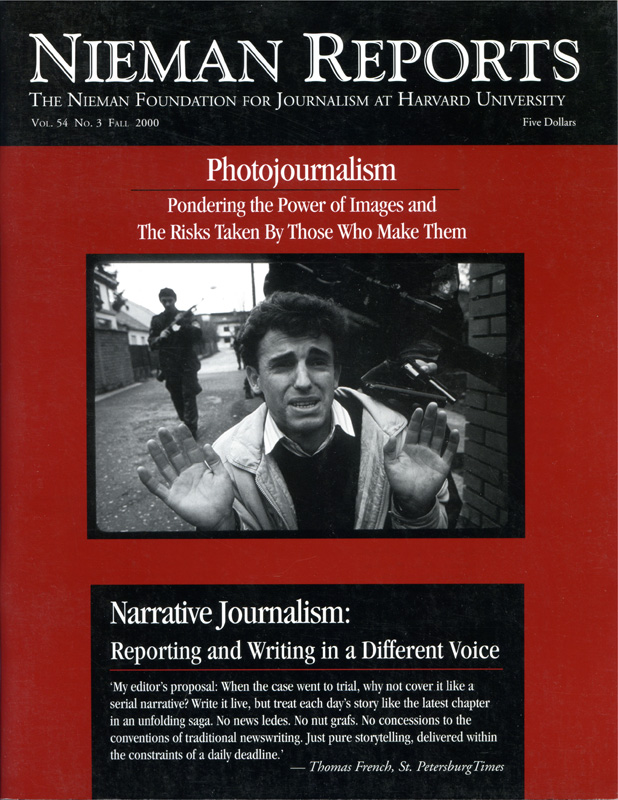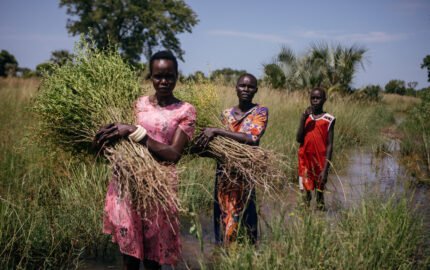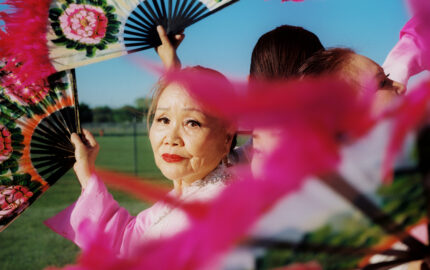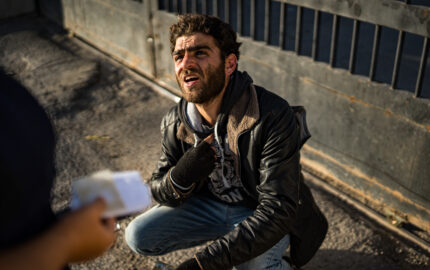
Photojournalism: Pondering the Power of Images and the Risks Taken by Those Who Make Them
James Nachtwey’s book “Inferno” is a collection of 382 photographs depicting the horrific brutality and suffering of people who are entrapped by war, famine or political unrest. Its publication offers an opportunity to reflect not only on his extraordinary and courageous career as a photojournalist but on how, in this time of visual onslaught, images such as these are absorbed and their messages acted upon.
A dirty little question preoccupies war photographers and war correspondents: Am I a voyeur? Certainly every journalist who has covered wars, if he or she has a conscience, has to wonder if recording modern conflicts, in words or pictures, is some kind of pornography. Pictures more than words, because words are mediators between the reader and the thing described; they appeal to the mind first, the senses second. Photographs, on the other hand, go directly to the emotions, to the heart and the gut, and the one who makes them is eventually going to question if presenting people with graphic images of blood and mutilation and death does anyone any good, or if it’s merely a titillating appeal to the base fascination of the grotesque.
I covered several major conflicts in my journalism career—the 1973 Arab-Israeli war, the Turkish invasion of Cyprus, Vietnam, Afghanistan, the Lebanese civil war, and the Eritrean rebellion. Just recently I returned from southern Sudan, where war has gone on for so long that it’s not a phenomenon but a condition. The album of my memory is filled with snapshots of corpses, wounded men, terrorized civilians, burned villages, blasted cities, of arms and legs and heads detached from their former owners, but two memories are most vivid.
One is of the Golan Heights in October 1973—hundreds of Israeli and Syrian tanks destroyed, some 8,000 bodies, many burned beyond recognition as anything once living, much less human, decomposing in the sun. You could smell the battlefield from five miles away when the wind was right, and as I wandered through that smoking abattoir, taking notes, interviewing soldiers, a voice murmured in the back of my mind, “What in the hell are you doing here? Do your readers have some sacred right to know what’s happened here? Isn’t this all just some kind of unholy thrill, for you and for them?”
The second memory is of the moment when I ceased to be an observer of war and became one of war’s victims. I was shot in the left ankle, the left leg, and the right foot by Muslim militiamen during the street fighting in Beirut. The shocking scarlet of my own blood, as it spilled out of my boot onto the concrete, made me see war as it had been seen by the countless millions of casualties, military and civilian, who suffered in the century just past. I was, for the first time in my life, compelled to share in the anguish that I had previously recorded. I’m not sure that I would have wanted a picture of my wounded self on a front page or on a TV screen. I’m not sure what I would have done or how I would have felt if a photographer had pointed a camera at me then, or if a reporter had tried to interview me. I do know that there is no pain like the deep bone pain of a serious bullet wound. It is profoundly isolating. It is profoundly private. It is not for public consumption, because there are no words, no film, no videotape that can communicate it.
I’ve never heard of photographers who try to justify taking pictures of political conventions or crime scenes or fires or plane crashes or shaggy dogs. Conventions and crimes and fires and plane crashes and shaggy dogs are news. Wars also are news, so why is it that images of war so often seem to need some justification beyond their news value, some high, transcendent purpose? I took this photo (or wrote this story) to make people aware of man’s inhumanity to man. To provoke outrage. To move people to act. This is generally nonsense, and when it isn’t nonsense, it’s dangerous. Act in the name of what? Act how? The very explicit still photos and footage coming out of Somalia in the early 90’s moved the outside world to act—stupidly as it turned out—while equally explicit pictures and stories of Sarajevo only seemed to numb the public’s sensibilities, so that nobody did anything until it was almost too late.
Seventeen years ago, I wrote a novel, “DelCorso’s Gallery,” about a combat photographer who becomes so obsessed that he uses his camera to wage war on war. He cannot see the paradox of war—that it is both a crime and the punishment of a crime—and pays for that blind spot with his life. None of this is to say that reporting wars is or should be morally neutral. It is to say that the morality lies not in how or whether an image, footage, or story affects human action; it lies, rather, in the imparting of information. Information, as playwright Tom Stoppard once wrote, is light, and the light, so long as it’s true, is enough.
Philip Caputo was a foreign correspondent in the 1970’s and early 1980’s for the Chicago Tribune and Esquire magazine. He is currently a contributing editor for National Geographic Adventure and is the author of eight books, of which the most recent is a novel, “The Voyage.”
I covered several major conflicts in my journalism career—the 1973 Arab-Israeli war, the Turkish invasion of Cyprus, Vietnam, Afghanistan, the Lebanese civil war, and the Eritrean rebellion. Just recently I returned from southern Sudan, where war has gone on for so long that it’s not a phenomenon but a condition. The album of my memory is filled with snapshots of corpses, wounded men, terrorized civilians, burned villages, blasted cities, of arms and legs and heads detached from their former owners, but two memories are most vivid.
One is of the Golan Heights in October 1973—hundreds of Israeli and Syrian tanks destroyed, some 8,000 bodies, many burned beyond recognition as anything once living, much less human, decomposing in the sun. You could smell the battlefield from five miles away when the wind was right, and as I wandered through that smoking abattoir, taking notes, interviewing soldiers, a voice murmured in the back of my mind, “What in the hell are you doing here? Do your readers have some sacred right to know what’s happened here? Isn’t this all just some kind of unholy thrill, for you and for them?”
The second memory is of the moment when I ceased to be an observer of war and became one of war’s victims. I was shot in the left ankle, the left leg, and the right foot by Muslim militiamen during the street fighting in Beirut. The shocking scarlet of my own blood, as it spilled out of my boot onto the concrete, made me see war as it had been seen by the countless millions of casualties, military and civilian, who suffered in the century just past. I was, for the first time in my life, compelled to share in the anguish that I had previously recorded. I’m not sure that I would have wanted a picture of my wounded self on a front page or on a TV screen. I’m not sure what I would have done or how I would have felt if a photographer had pointed a camera at me then, or if a reporter had tried to interview me. I do know that there is no pain like the deep bone pain of a serious bullet wound. It is profoundly isolating. It is profoundly private. It is not for public consumption, because there are no words, no film, no videotape that can communicate it.
I’ve never heard of photographers who try to justify taking pictures of political conventions or crime scenes or fires or plane crashes or shaggy dogs. Conventions and crimes and fires and plane crashes and shaggy dogs are news. Wars also are news, so why is it that images of war so often seem to need some justification beyond their news value, some high, transcendent purpose? I took this photo (or wrote this story) to make people aware of man’s inhumanity to man. To provoke outrage. To move people to act. This is generally nonsense, and when it isn’t nonsense, it’s dangerous. Act in the name of what? Act how? The very explicit still photos and footage coming out of Somalia in the early 90’s moved the outside world to act—stupidly as it turned out—while equally explicit pictures and stories of Sarajevo only seemed to numb the public’s sensibilities, so that nobody did anything until it was almost too late.
Seventeen years ago, I wrote a novel, “DelCorso’s Gallery,” about a combat photographer who becomes so obsessed that he uses his camera to wage war on war. He cannot see the paradox of war—that it is both a crime and the punishment of a crime—and pays for that blind spot with his life. None of this is to say that reporting wars is or should be morally neutral. It is to say that the morality lies not in how or whether an image, footage, or story affects human action; it lies, rather, in the imparting of information. Information, as playwright Tom Stoppard once wrote, is light, and the light, so long as it’s true, is enough.
Philip Caputo was a foreign correspondent in the 1970’s and early 1980’s for the Chicago Tribune and Esquire magazine. He is currently a contributing editor for National Geographic Adventure and is the author of eight books, of which the most recent is a novel, “The Voyage.”


